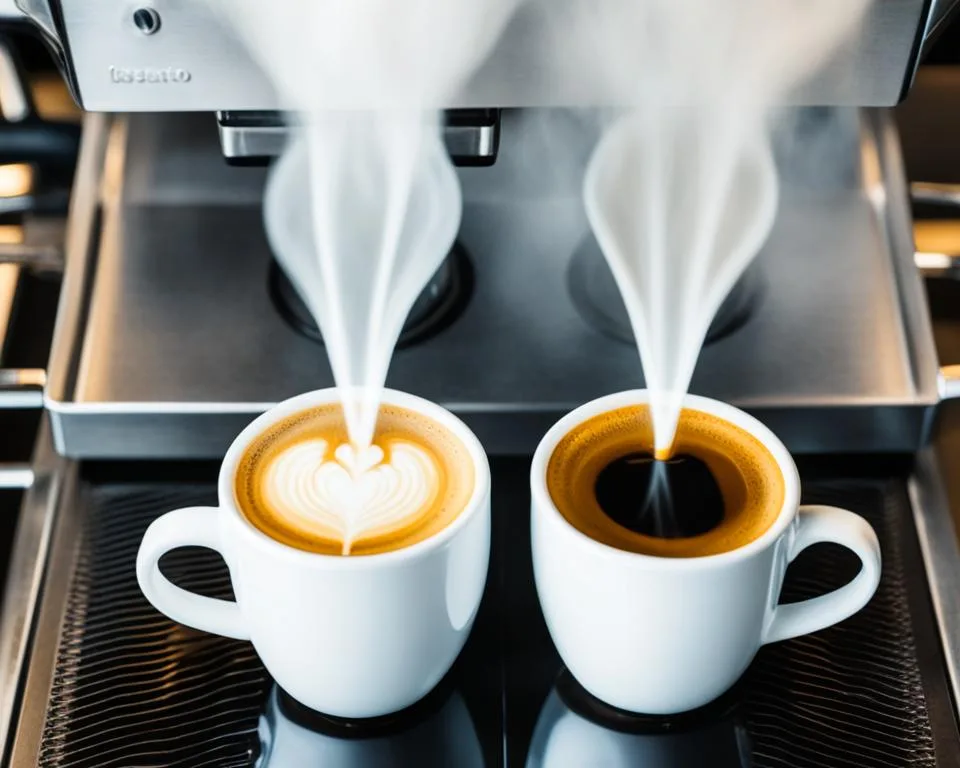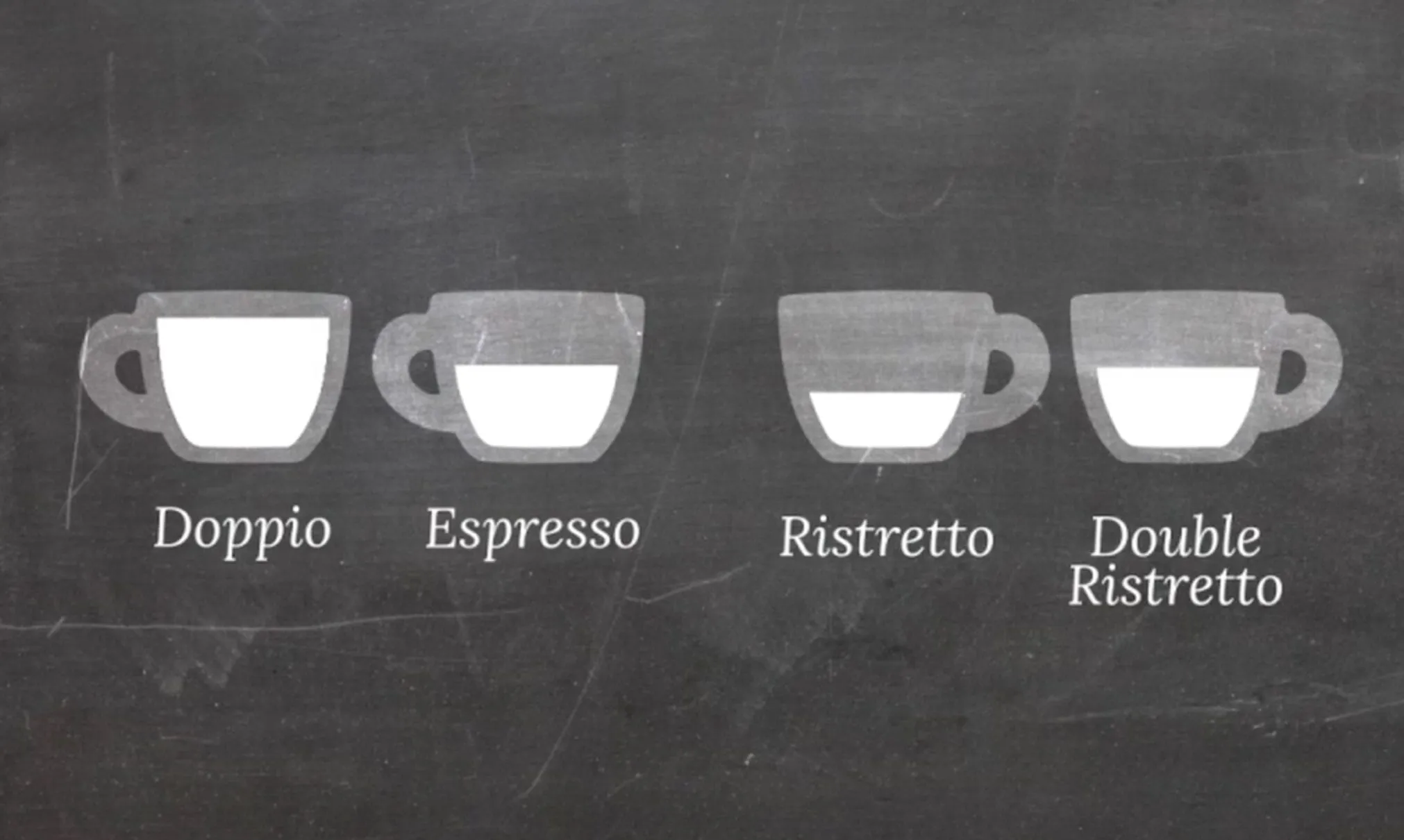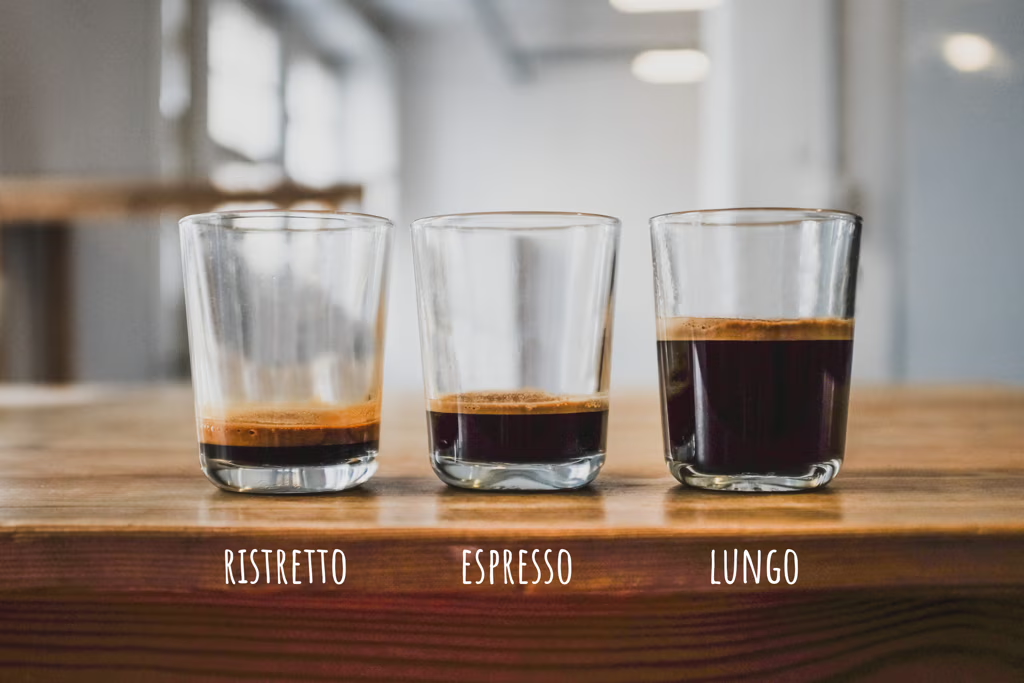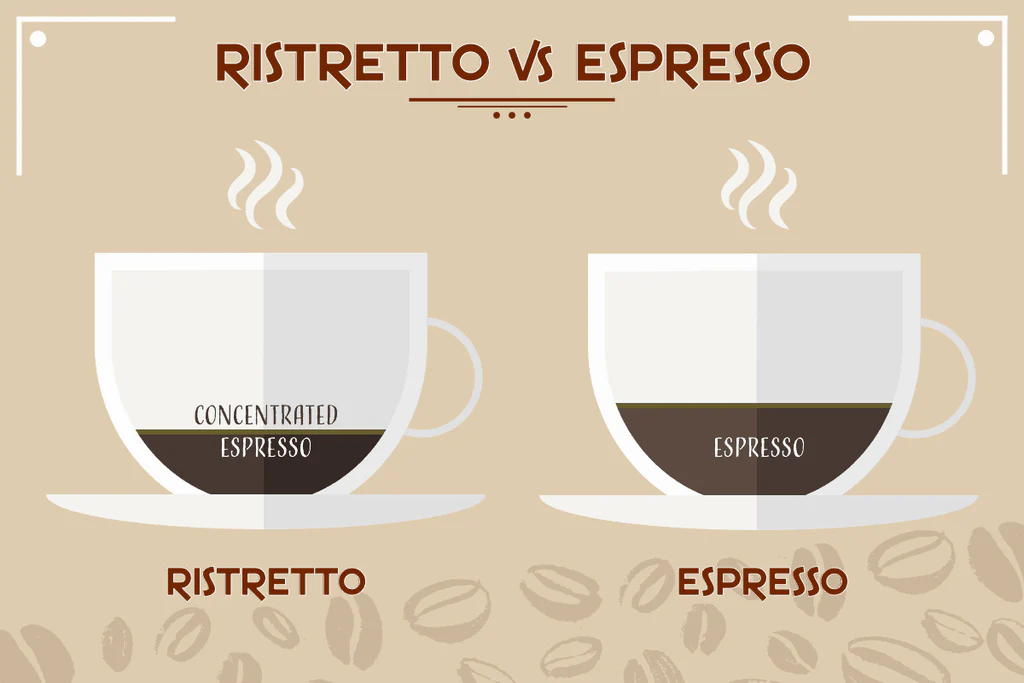Ristretto and espresso are both popular coffee choices. Each has its unique qualities and flavors.
Understanding the differences between ristretto and espresso can enhance your coffee experience. These two coffee types may seem similar, but they offer distinct tastes and preparation methods. Ristretto is a shorter, more concentrated shot of coffee, while espresso is the standard full shot.
Comparing these can help you decide which suits your taste preference. Whether you enjoy a bold, intense flavor or a smoother, balanced taste, this comparison will provide insights into the world of specialty coffee. Dive into the details to find out which brew best fits your morning routine.
Introduction To Ristretto And Espresso
Ristretto and espresso are beloved coffee shots worldwide. Both offer rich flavors and deep aromas. But, they have distinct differences. Understanding these can enhance your coffee experience.
Ristretto is a concentrated coffee shot. It uses less water than espresso. Espresso, on the other hand, is slightly more diluted. This gives each a unique taste and texture.
Brief History
The espresso was born in Italy in the early 1900s. It revolutionized coffee brewing. The process uses high pressure to extract coffee quickly. Ristretto emerged later, offering a bolder taste. Italians sought a stronger coffee experience. Thus, ristretto gained popularity.
Popularity In Coffee Culture
Espresso remains a staple in cafes worldwide. Its versatility is unmatched. Cappuccinos and lattes start with an espresso base. Ristretto, though less common, attracts purists. Its intense flavor appeals to true coffee enthusiasts.
Both drinks hold a special place in coffee culture. They cater to different tastes and preferences. Each provides a unique coffee experience. Whether you prefer ristretto or espresso, both have much to offer.
Defining Characteristics
When it comes to coffee, the battle between ristretto and espresso is nothing short of a brewing clash. Both are rooted in the Italian tradition, yet they offer distinct experiences. Understanding their defining characteristics can be a fascinating journey that enhances your coffee appreciation.
Imagine you’re at your favorite coffee shop, pondering the menu. You wonder, “Should I go for the bold espresso or the intense ristretto?” Knowing what sets them apart might just help you make the perfect choice.
Bean Selection
Choosing the right beans is crucial for both ristretto and espresso. You can use similar beans for both, but the flavor profile can differ. Ristretto often highlights the bean’s inherent sweetness and unique flavors.
Espresso, on the other hand, tends to bring out the bold, robust characteristics. If you enjoy experimenting, try a single-origin bean for ristretto to experience its delicate notes. For espresso, a blend might offer a complex flavor that satisfies your taste buds.
Grind Size
Grind size plays a key role in defining ristretto and espresso. Ristretto requires a finer grind compared to espresso. This finer grind allows for a shorter extraction time, resulting in a concentrated shot.
Espresso, while still finely ground, is slightly coarser, allowing for a longer extraction. This gives it a balanced flavor with a thicker crema. Next time you’re brewing, consider adjusting your grinder. It might just transform your coffee experience.
Do you ever wonder how the grind impacts flavor? Try experimenting with grind size at home. You might discover a new favorite way to enjoy your coffee.
Brewing Process
The brewing process is where Ristretto and Espresso show their differences. While they share similarities, their unique brewing techniques result in distinct flavors and experiences. Let’s explore these differences by looking at two key factors: extraction time and water ratio.
Extraction Time
Extraction time plays a crucial role in the brewing process. Ristretto has a shorter extraction time compared to Espresso. The water passes through the coffee grounds quickly. This leads to a more intense and concentrated flavor. Espresso, on the other hand, has a longer extraction time. This allows for a more balanced and developed flavor profile. Both methods use pressure, but the timing creates unique taste experiences.
Water Ratio
The water ratio is another important element. Ristretto uses less water than Espresso. Typically, Ristretto has a 1:1 ratio of coffee to water. This results in a thicker, richer shot. Espresso usually has a 1:2 ratio. This means more water flows through the coffee grounds. The result is a slightly larger, smoother shot with a milder flavor. Understanding these ratios helps in appreciating the distinct characteristics of each brew.
Flavor Profiles
Ristretto and espresso are both popular coffee choices. Each offers a unique flavor experience. Coffee lovers often debate their differences. The flavor profiles of these two brews can be distinct. Understanding these differences can enhance your coffee enjoyment. Let’s explore the taste notes and aroma differences that set them apart.
Taste Notes
Ristretto delivers a bold, concentrated taste. Its brewing process uses less water. This results in a richer, more intense flavor. You’ll notice sweeter and fruitier notes. It has a syrupy texture that lingers on the palate.
Espresso, on the other hand, is more balanced. It offers a mix of bitter and sweet flavors. This classic coffee has a fuller mouthfeel. Its taste is often described as robust and well-rounded. You may detect hints of chocolate or nuts in a good espresso.
Aroma Differences
Ristretto’s aroma is intense and vibrant. Its concentrated nature enhances the coffee’s fragrance. You’ll likely notice floral and fruity scents.
Espresso has a more pronounced aroma. It tends to fill the room with a rich, inviting smell. The scent is often earthy with subtle caramel notes.
The difference in aroma can influence your coffee choice. Aroma plays a crucial role in the overall coffee experience.
Caffeine Content
Caffeine content plays a crucial role in coffee preferences. Both ristretto and espresso have distinct caffeine levels. Understanding these differences can help coffee lovers make informed choices. Let’s explore the caffeine content in ristretto and espresso.
Ristretto Caffeine Levels
Ristretto offers a concentrated coffee experience. It’s brewed with less water. This results in a bold and rich shot. The caffeine content in ristretto is lower than espresso. It uses the same amount of coffee grounds. The shorter extraction time limits caffeine release. So, ristretto has less caffeine per shot.
Espresso Caffeine Levels
Espresso is a staple in the coffee world. It is brewed with more water than ristretto. This longer brewing process extracts more caffeine. Espresso shots contain a higher caffeine content. Each shot provides a strong caffeine kick. Perfect for those who need a quick energy boost.
Serving Styles
When you think about coffee, the serving style can drastically change your experience. Ristretto and espresso might seem similar, but they each bring unique flavors and presentations. Have you ever noticed how the way your coffee is served can affect your enjoyment? Let’s dive into the traditional and modern serving styles of these two popular coffee choices.
Traditional Presentation
Traditionally, espresso is served in a small, demitasse cup, often accompanied by a small spoon and a glass of water. This classic presentation reflects the simplicity and elegance of espresso. The demitasse cup helps concentrate the rich aroma and flavor, inviting you to savor each sip.
Ristretto, on the other hand, shares the same cup size but packs an intense punch. Its smaller amount of water results in a bolder flavor, making its traditional serving style a compact powerhouse. Imagine sitting in a quaint Italian café, letting the robust taste transport you to the cobblestone streets of Rome.
Modern Variations
Modern coffee culture embraces creativity, leading to innovative serving styles. Espresso has found its way into lattes, cappuccinos, and even cocktails. Have you ever tried an espresso martini? It’s a delightful twist on the classic, offering a bold caffeine kick with a touch of sophistication.
Ristretto is no stranger to modern variations. It’s often used in specialty drinks where its concentrated flavor shines. Think of a ristretto macchiato with a dollop of foam or a ristretto shot blended into an iced coffee. These modern twists challenge traditional norms and invite you to explore new taste experiences.
So, next time you order coffee, consider how the serving style might enhance or change your experience. Does the traditional presentation appeal to your love for classic flavors, or do modern variations excite your adventurous side? Your coffee choice is more than just a drink; it’s an experience waiting to unfold.
Health Benefits And Drawbacks
Ristretto and espresso offer unique flavors and experiences. Both have health benefits and drawbacks. Coffee lovers often wonder which is better for them. Understanding the health aspects can help make informed choices.
Antioxidant Properties
Coffee contains antioxidants, which combat free radicals. These antioxidants are present in both ristretto and espresso. They help protect cells from damage. Drinking coffee may reduce inflammation. It might also lower the risk of certain diseases. Espresso tends to have more concentrated antioxidants. This is because it uses more coffee grounds. Ristretto may offer similar benefits, but in smaller quantities.
Potential Risks
Caffeine content is a concern for some. Espresso usually has more caffeine than ristretto. Excessive caffeine can lead to anxiety and insomnia. It might also cause digestive issues. People with heart conditions should be careful.
High caffeine intake may affect blood pressure. Coffee acidity can irritate sensitive stomachs. Choosing ristretto could minimize caffeine intake. Always consider personal health conditions when deciding. Moderation is key for enjoying coffee safely.
Choosing Your Preferred Brew
Choosing your preferred brew between ristretto and espresso is like selecting a painting for your living room. It’s not just about what’s popular; it’s about what resonates with you. As you dive into this decision, consider the nuances of taste, the pairing possibilities, and how each option fits into your daily routine. Let’s explore these aspects to help you find the perfect match for your coffee cravings.
Personal Taste
Your taste preferences are unique. Ristretto offers an intense, robust flavor that some describe as a concentrated burst of coffee goodness. If you enjoy bold tastes, it might be your go-to. On the other hand, espresso provides a balanced mix of richness and smoothness. It’s like savoring a fine wine, where layers of flavor unfold with every sip.
Try both. Let your taste buds be the judge. It’s often surprising how a simple change in coffee strength can transform your morning ritual. Think about the kind of experience you want with each cup. Do you crave a strong jolt or a mellow moment of relaxation?
Beverage Pairings
Pairing your brew with the right food can elevate your coffee experience. Ristretto’s boldness pairs beautifully with rich, decadent desserts. Imagine a dark chocolate cake with a shot of ristretto, enhancing the sweet bitterness. It’s a match made in flavor heaven.
Espresso, with its versatile profile, complements a wider range of foods. Whether it’s a buttery croissant or a savory breakfast sandwich, espresso’s balanced taste can enhance your meal. Experiment with pairings to discover combinations that surprise and delight your palate.
Consider your daily routine. Are you sipping coffee alone or alongside a meal? What flavors do you enjoy together? These questions can guide you toward your ideal coffee pairing. Remember, there’s no wrong choice; it’s all about your personal discovery.
Ultimately, choosing between ristretto and espresso is a personal journey. Each has its charm and appeal, waiting for you to explore. Which brew will you choose to start your day?
Global Influence
The global influence of ristretto and espresso is vast, shaping coffee culture across continents. Both coffee styles have found their way into the daily routines of millions, each offering a unique taste and experience. Their impact is not just limited to the cup but extends into cultural rituals and regional preferences that define coffee consumption worldwide.
Cultural Impact
Ristretto and espresso have both made their mark on global coffee culture, but in distinct ways. Espresso, with its robust flavor and quick preparation, has become a symbol of modern coffee culture, especially in urban settings. It’s the go-to for a quick caffeine fix.
Ristretto, on the other hand, offers a more intense experience, often preferred by those who savor their coffee slowly. Its concentrated flavor has influenced specialty coffee shops to offer more personalized options. Have you ever noticed how some baristas take pride in crafting the perfect ristretto shot?
Regional Preferences
Different regions have developed unique preferences for ristretto or espresso, often shaped by local tastes and traditions. In Italy, the birthplace of both, espresso reigns supreme. Italians appreciate its bold flavor and the social experience of drinking it at a café.
In contrast, places like Australia and New Zealand have embraced ristretto, often incorporating it into their popular flat whites. This preference highlights a regional trend towards richer, smoother coffee experiences. What coffee style does your region favor, and why do you think that is?
Understanding these preferences can help you explore new coffee experiences. Next time you travel, try ordering the local favorite and see how it compares to your usual choice. You might discover a new favorite or gain a deeper appreciation for the coffee culture of that region.
Frequently Asked Questions
Is Ristretto Stronger Than Espresso?
Yes, ristretto is stronger than espresso. It has a more concentrated flavor and less water, resulting in a bolder taste.
Does Ristretto Have More Caffeine?
Ristretto contains less caffeine than a regular espresso shot. Its shorter extraction time results in a more concentrated flavor but less caffeine. Espresso’s longer brewing time extracts more caffeine, making it stronger. Choose ristretto for a bold taste with less caffeine.
Why Do People Drink Ristretto?
People drink ristretto for its rich, concentrated flavor and intense aroma. It contains less water, offering a bolder taste. Ristretto is less bitter and has a sweeter profile compared to espresso. Coffee enthusiasts enjoy its smooth, full-bodied experience, making it a popular choice for espresso lovers.
Do You Put Milk In Ristretto?
Ristretto is a concentrated espresso shot, usually enjoyed without milk. Adding milk alters its intense flavor profile. Some prefer ristretto in milk-based drinks like lattes, but traditionally, it’s served plain. Enjoy the bold taste of ristretto as is for the authentic experience.
Conclusion
Choosing between ristretto and espresso depends on personal taste. Ristretto offers a bolder, concentrated flavor. Espresso provides a balanced, smooth taste. Both options have their unique charm. Experimenting with each can help find your favorite. Coffee lovers can enjoy exploring these distinct brews.
Whether you prefer a strong kick or a milder touch, there’s a choice for everyone. Enjoy the journey of discovering your perfect cup. Happy sipping!




